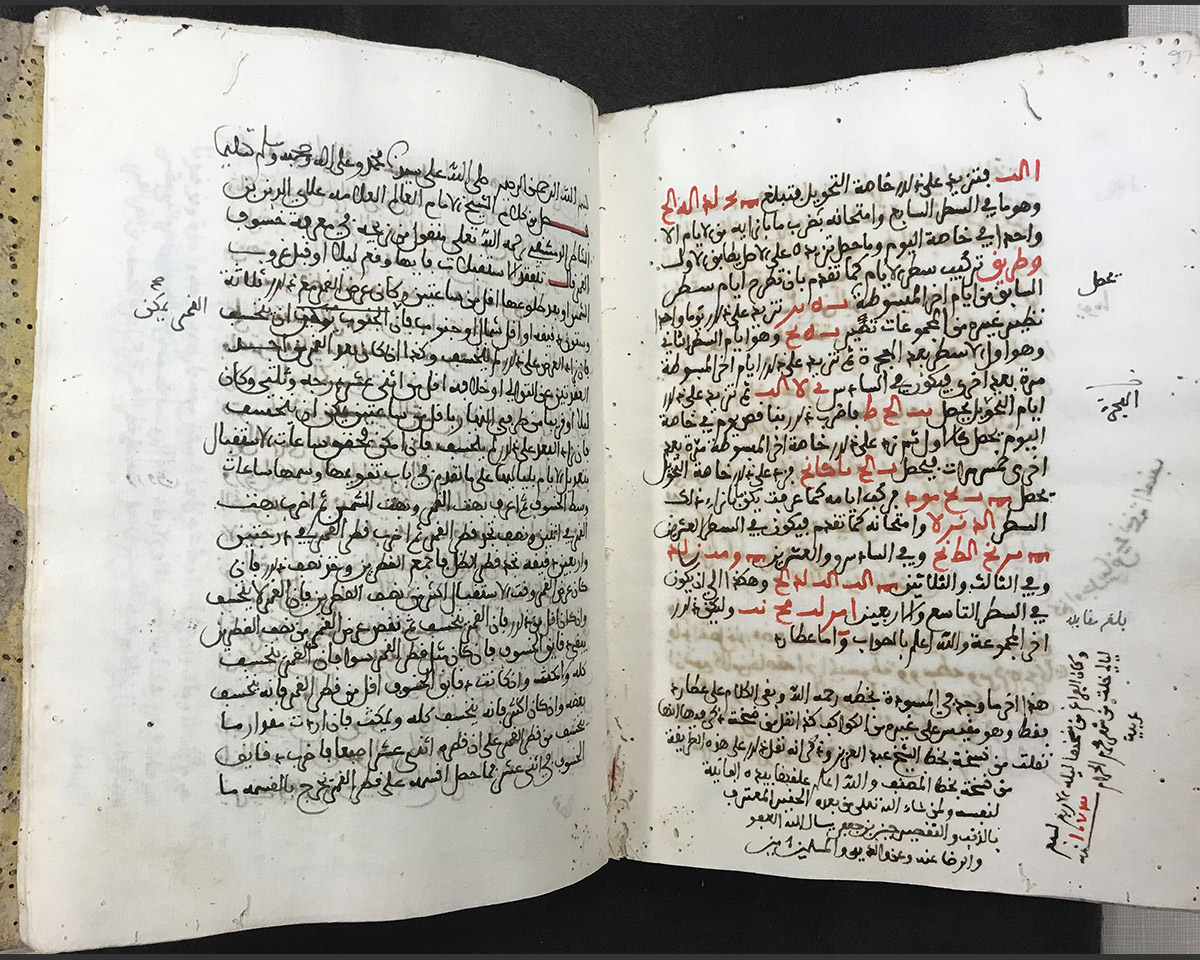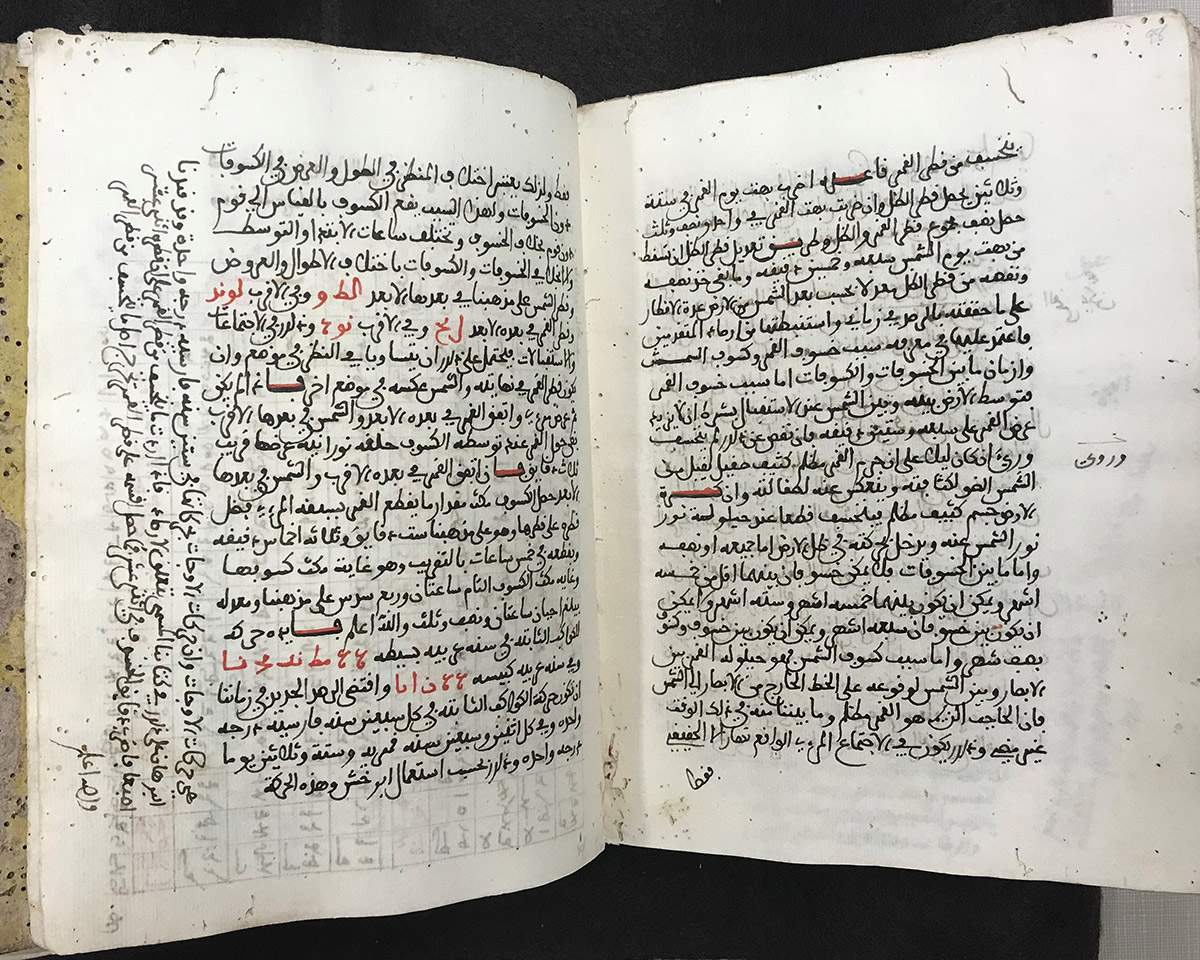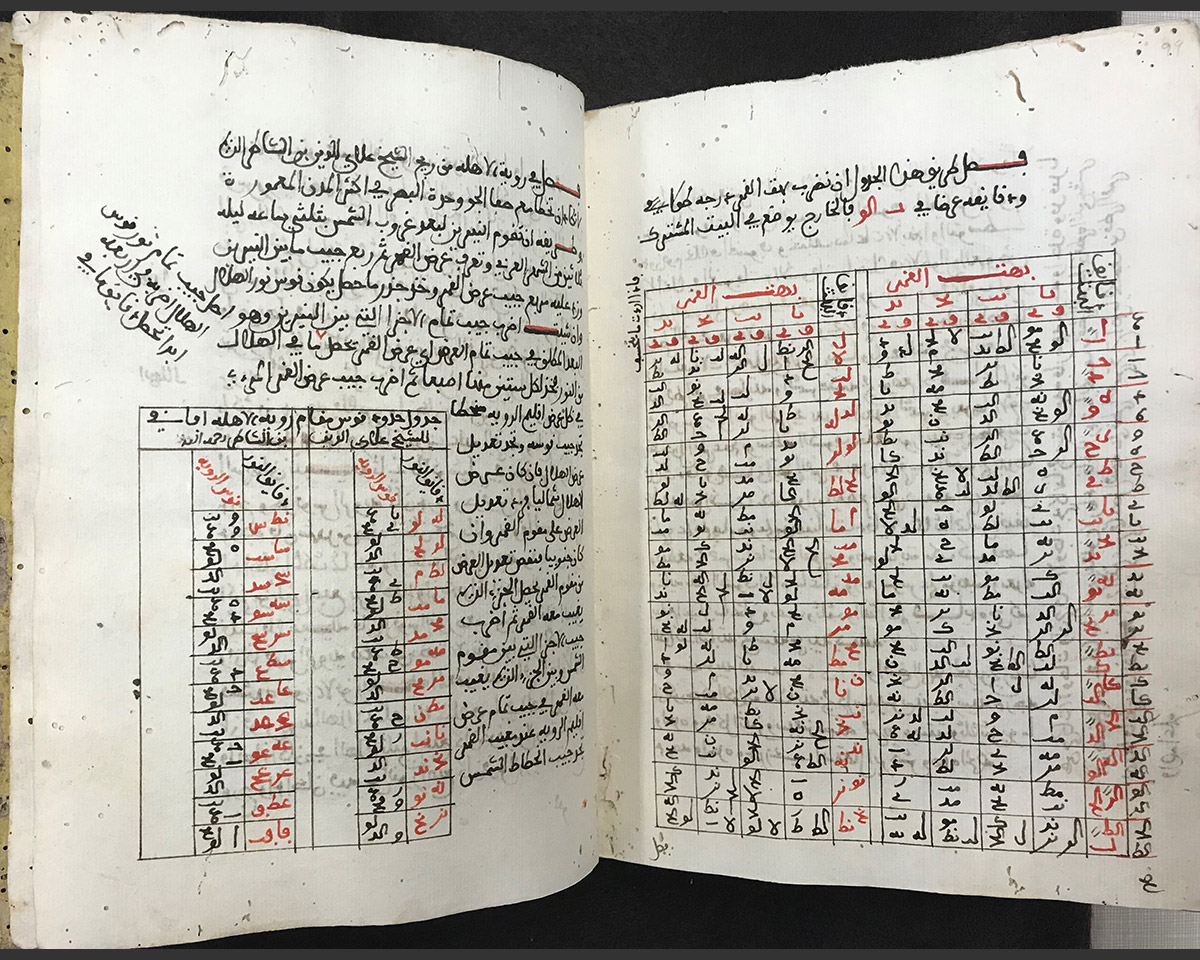Planetary Theory: Ibn al-Shāṭir (d.1375/6)
14th century Damascus

- فصول من زيج ابن الشاطر
- علاء الدين علي بن ابراهيم الأنصاري المعروف بابن الشاطر
- [Five unnumbered faṣls on lunar crescent visibility taken from Ibn al-Shāṭir's zīj].
- Ibn al-Shāṭir, ʻAlāʾal-Dīn ʻAlī ibn Ibrāhīm (d.1375/6).
- Copied ca. 1662.
- Arabic.
- Manuscript codex on watermarked paper.
- Isl. Ms. 795,6, fol.97v/98r.

- فصول من زيج ابن الشاطر
- علاء الدين علي بن ابراهيم الأنصاري المعروف بابن الشاطر
- [Five unnumbered faṣls on lunar crescent visibility taken from Ibn al-Shāṭir's zīj].
- Ibn al-Shāṭir, ʻAlāʾal-Dīn ʻAlī ibn Ibrāhīm (d.1375/6).
- Copied ca. 1662.
- Arabic.
- Manuscript codex on watermarked paper.
- Isl. Ms. 795,6, fol.98v/99r.

- فصول من زيج ابن الشاطر
- علاء الدين علي بن ابراهيم الأنصاري المعروف بابن الشاطر
- [Five unnumbered faṣls on lunar crescent visibility taken from Ibn al-Shāṭir's zīj].
- Ibn al-Shāṭir, ʻAlāʾal-Dīn ʻAlī ibn Ibrāhīm (d.1375/6).
- Copied ca. 1662.
- Arabic.
- Manuscript codex on watermarked paper.
- Isl. Ms. 795,6, fol.99v/100r.
This manuscript includes an excerpt — opening with a discussion of lunar eclipses — from the popular zīj (astronomical handbook) of Ibn al-Shāṭir (d.1375/6), which he prepared at Damascus.
Ibn al-Shāṭir studied the mathematical sciences in Damascus and trained further in Alexandria and Cairo where many prominent scientists were working in applied astronomy. He worked as timekeeper (muwaqqit) at the Umayyad Mosque in Damascus and wrote works on astronomical theory and the manufacture and use of astronomical instruments.
In his contributions to the long-standing Islamic tradition of astronomical instrument manufacture, Ibn al-Shāṭir improved and invented instruments for observation and measurement, simulation of heavenly motion, and solutions to problems in spherical astronomy. Several instruments made by him survive, including an astrolabe dating to 1326.
In his theoretical writings, Ibn al-Shāṭir tackled critical reforms to Greek astronomy. He is well known for elaborating mathematical solutions for expressing planetary motions, most notably the particularly challenging situations of the Earth’s Moon and of Mercury. He arrived at these solutions after deciding to test Ptolemy’s observations and address the problems of his models — especially their violations of uniform circular motions.
Ibn al-Shāṭir presented his alternatives (based on his own observations) in a work of simplified theoretical astronomy entitled Nihāyat al-suʾl fī taṣḥīḥ al-uṣūl. In his zīj he used the new models of his Nihāyat al-suʾl rather than the standard Ptolemaic models.
Unlike Ṭūsī and other astronomers working at Marāghah, Ibn al-Shāṭir insisted on the Earth as the mathematical and cosmological center of the universe. His system solves Ptolemy’s violations using epicycles rather than eccentrics while placing Earth as the primary mathematical center and still mathematically representing celestial motion fairly accurately.
His profound achievement bears remarkable similarity with the models proposed by Nicholas Copernicus (d.1543) two centuries later. Their respective models for the Earth’s moon and for Mercury are virtually identical. They both utilize the Ṭūsī couple, and they both eliminate the equants. The striking similarities suggest that Copernicus, when writing his Commentariolus, must have known of Ibn al-Shāṭir’s planetary models, which showed a particular way to resolve the irregular planetary motions brought on by Ptolemy’s equant. (Roberts 1957; Kennedy and Roberts 1959; Swerdlow and Neugebauer 1984) F. Jamil Ragep has even argued that Ibn al-Shāṭir’s models exhibit a “heliocentric bias” that made them especially compelling for use by Copernicus in his transformation to a heliocentric system. (Ragep 2016) Though the precise manner of transmission remains unclear, it has been demonstrated that a Jewish scholar called Moses Galeano carried to Italy knowledge of Ibn al-Shāṭir’s models around the time that Copernicus was studying there. (Langerman 2007 p290-296; Morrison 2014)
Select Bibliography
- Isl. Ms. 795,6 Online catalogue record (R Dougherty).
- Kennedy, Edward S. and Victor Roberts. 1959. “The Planetary Theory of Ibn al-Shāṭir.” Isis 50: 227–35.
- Langermann, Y. Tzvi. 2007. “A Compendium of Renaissance Science. Taʿalumot ḥokmah by Moses Galeano.” Aleph: Historical Studies in Science and Judaism 7: 285–318.
- The Life and Work of Ibn al-Shāṭir, an Arab Astronomer of the fourteenth century, edited by Edward Stewart Kennedy and Imad Ghanem. Ḥalab: Maʻhad al-Turāth al-ʻIlmī al-ʻArabī, Jāmiʻat Ḥalab, 1976.
- Mayer, L. A. 1956. Islamic Astrolabists and Their Works. Geneva: Albert Kundig.
- Morrison, Robert. 2014. “A Scholarly Intermediary Between the Ottoman Empire and Renaissance Europe.” Isis 105: 32–57.
- Nikfahm-Khubravan, Sajjad and F. Jamil Ragep. “Ibn al-Shāṭir.” Encyclopaedia of Islam THREE, edited by Kate Fleet et al.
- Ragep, F. Jamil. 2016. “Ibn Al-Shāṭir and Copernicus: The Uppsala Notes Revisited.” Journal for the History of Astronomy 47 (4): 395–415.
- Roberts, Victor. 1957. “The Solar and Lunar Theory of Ibn ash-Shāṭir. A pre-Copernican Copernican model.” Isis 48: 428–32.
- Saliba, George. 2007. Islamic Science and the Making of the European Renaissance. Cambridge, MA: MIT Press: 162-165.
- Swerdlow, N. M. 2017. “Copernicus’s Derivation of the Heliocentric Theory from Regiomontanus’s Eccentric Models of the Second Inequality of the Superior and Inferior Planets.” Journal for the History of Astronomy 48 (1): 33–61.
- Swerdlow, N. M. and Otto Neugebauer. 1984. Mathematical Astronomy in Copernicus’s De revolutionibus. New York: Springer-Verlag.


